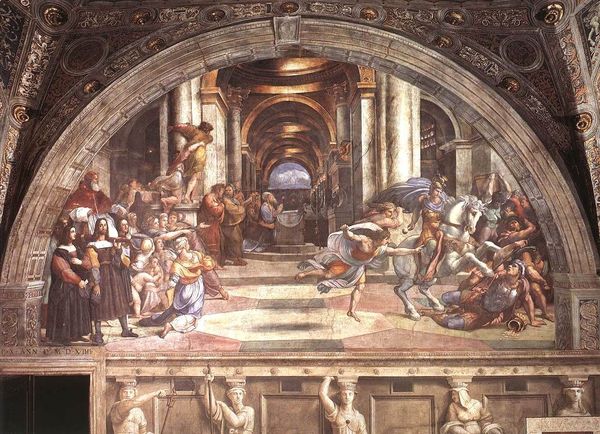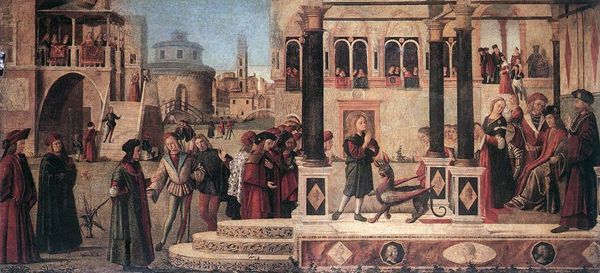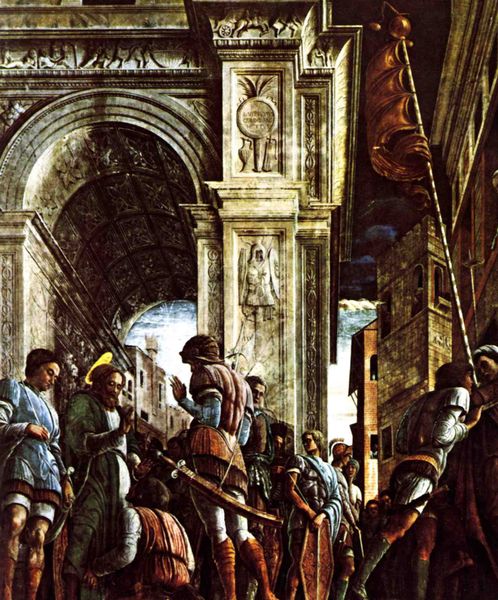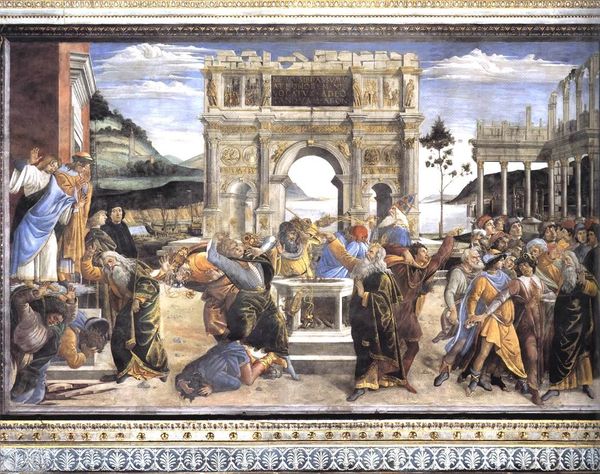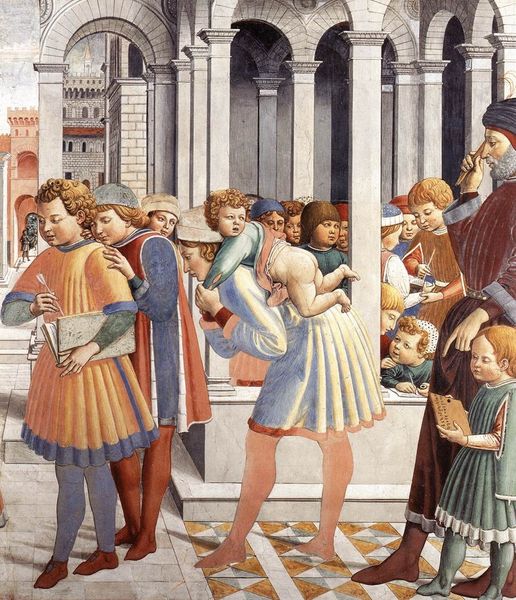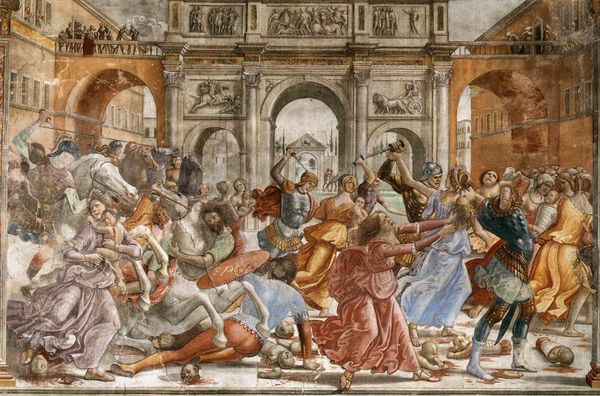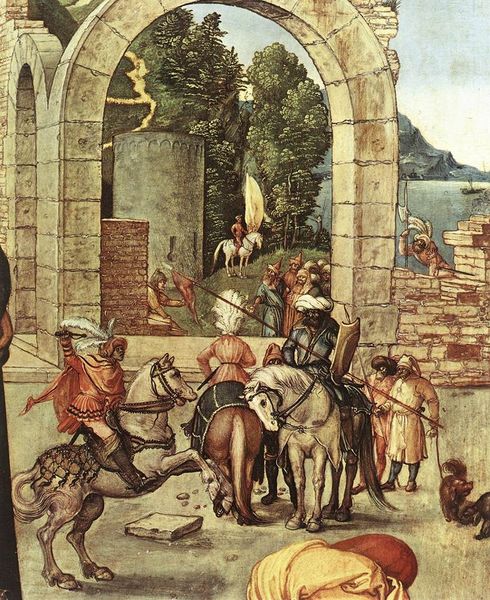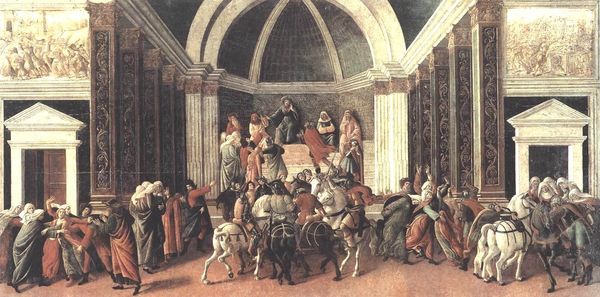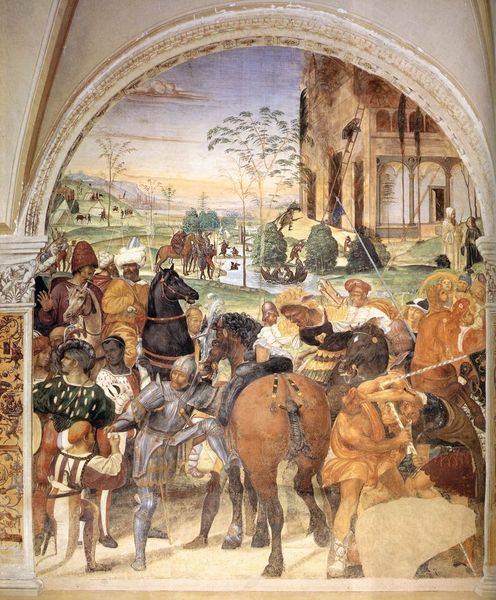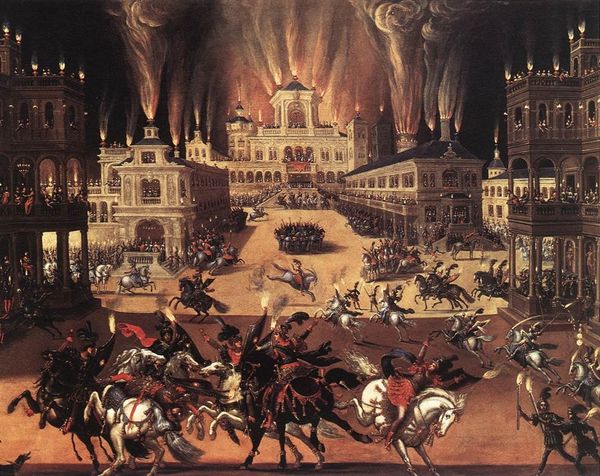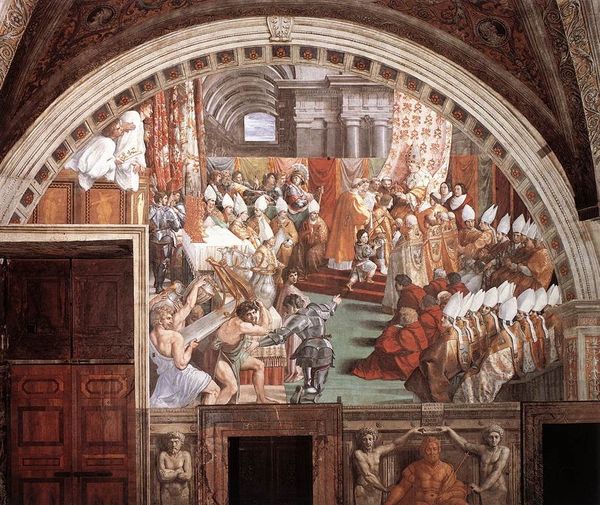
tempera, painting
#
narrative-art
#
tempera
#
painting
#
landscape
#
figuration
#
classicism
#
arch
#
history-painting
#
italian-renaissance
#
early-renaissance
#
historical building
Dimensions: 84 x 180 cm
Copyright: Public domain
Editor: Here we have Botticelli's "The Story of Lucretia," painted in 1504 using tempera. It depicts several scenes happening at once in this incredibly detailed architectural space. It feels quite busy and dramatic. What strikes you when you look at this work? Curator: Well, first, consider the sheer labor involved. Tempera demands precision; the layering of pigments, sourced and ground, would have been incredibly time-consuming. This labor is not just the artist's; it encompasses the workshops that prepared materials. I am curious to see the layers of this artwork. It seems the cultural consumption of the narrative relies on an unseen foundation of material production. Editor: That’s fascinating, I never thought about the 'invisible' labor. Curator: Absolutely. Now, observe how Botticelli renders space. There's a clear interest in perspective, a marker of the Renaissance. However, think about the physical construction of these buildings he depicts. This isn't just about representing architecture; it’s about presenting these architectures in a social display to influence ideas on architecture’s presence. Editor: So, he is constructing a material world both on the panel and conceptually. How did the medium impact that vision? Curator: Tempera allowed for meticulous detail, mimicking the physical act of building. The use of gold, too, reflects material wealth and its impact on crafting and displaying architecture. Editor: It is as though each building had the social power of labor imbued within it. Thanks, that shifts my perspective a great deal! Curator: Indeed! Considering art through this lens – process, materials, context – brings new richness.
Comments
No comments
Be the first to comment and join the conversation on the ultimate creative platform.
